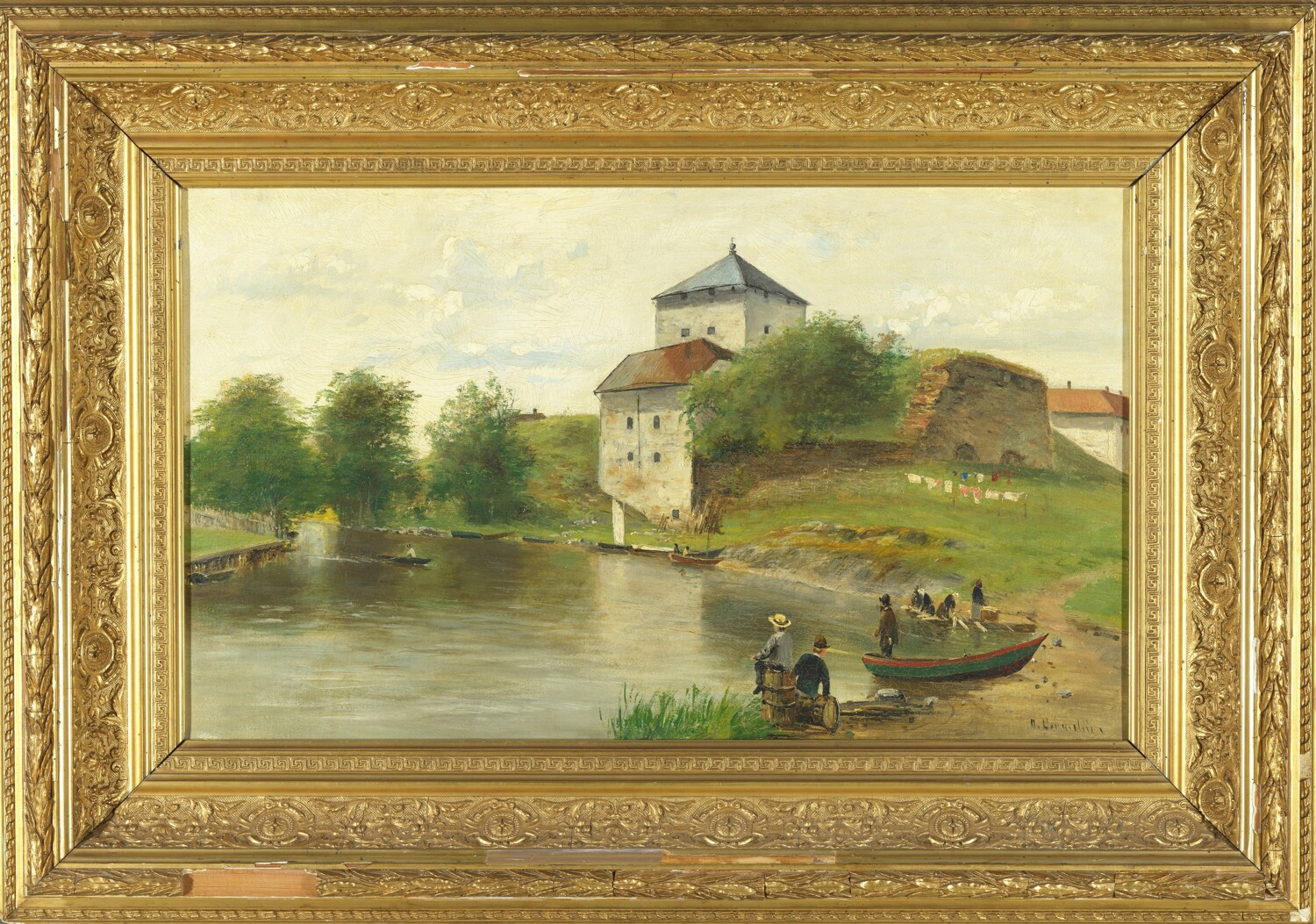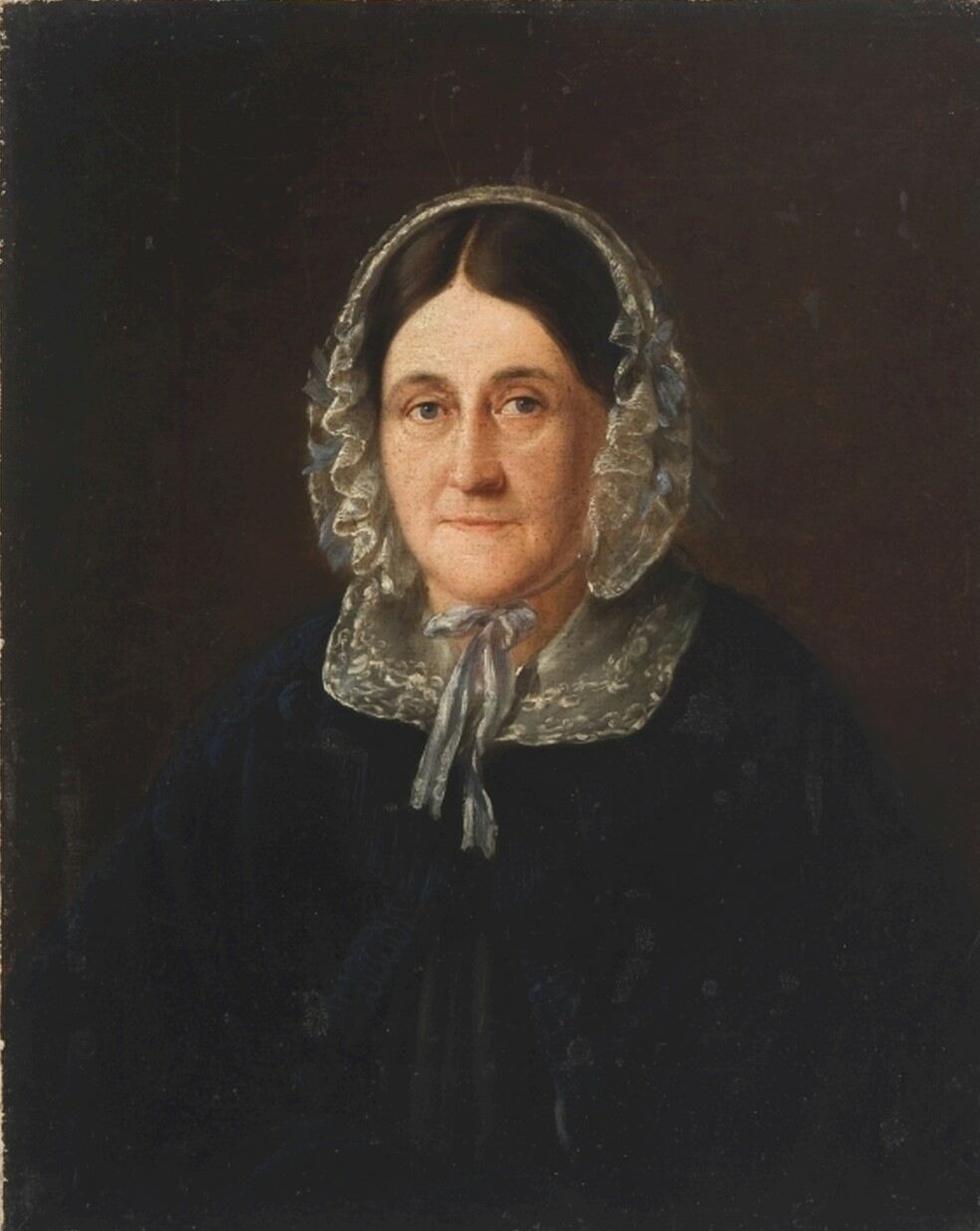Rijksmuseum – Licence: Public Domain Mark 1.0 Source: Europeana
i am
As I sit here, immersed in my task, I embody the essence of domestic tranquility and diligence. My hands, deftly working with fabric, reflect the virtues of patience and care. The soft light that filters into the room casts gentle shadows, creating an atmosphere of quiet contemplation. I am surrounded by symbols of domestic life: the sewing materials on my table represent not just the act of mending clothes, but also the nurturing spirit of home. The dog at my feet, a small companion, signifies loyalty and comfort, reminding me of the simple joys that accompany daily routines. Emotionally, I feel a blend of focus and serenity. The repetitive motion of sewing allows my mind to wander, yet I remain anchored in the present moment. There is a sense of purpose in my work, a connection to tradition and the generations of women who have come before me, each stitch a testament to their resilience. The colors around me—muted yet warm—evoke a sense of harmony and stability. The draped fabric and the organized chaos of my workspace symbolize the balance between creativity and order. In this intimate setting, I find solace and strength, embodying the spirit of domesticity while also hinting at the deeper narratives of womanhood, labor, and the quiet power of everyday life.
palette
In this artwork, I am enveloped in a palette dominated by warm, muted tones, particularly soft browns, creams, and gentle greens. These colors create a sense of calm and intimacy, inviting the viewer into my quiet world. The warm hues evoke feelings of comfort and domesticity, enhancing the serene atmosphere of the scene. The interplay of light and shadow, along with the choice of colors, contributes to a feeling of stillness, as if time has paused in this moment of sewing. The subtle variations in color help to delineate space and form, giving a sense of depth while maintaining a tranquil ambiance. The soft, natural light filtering into the room further emphasizes the peacefulness of the setting. Certain colors in my surroundings carry cultural connotations; for instance, the soft cream of my dress may symbolize purity and gentleness, while the muted green of the drapery can represent growth and harmony. These associations deepen the emotional resonance of the piece, allowing viewers to connect with the themes of domestic life and personal reflection. Overall, the color choices not only enhance the visual appeal but also evoke specific emotions, guiding the viewer’s interpretation of my quiet, contemplative moment. The harmonious palette fosters a sense of nostalgia and warmth, inviting reflection on the simplicity and beauty of everyday life.
idea
Domesticity
The scene captures a moment of domestic life, emphasizing the tranquility and routine of home activities, which is a common theme in genre painting.
idea
Craftsmanship
The woman is engaged in sewing, highlighting the importance of craftsmanship and the skill involved in creating clothing, reflecting societal roles of women in the past.
idea
Companionship
The presence of the small dog symbolizes companionship and loyalty, often representing the bond between humans and animals in domestic settings.
idea
Fashion
The clothing and fabrics depicted suggest an interest in fashion and the social status of the woman, indicating the cultural significance of attire in historical contexts.
Art History
Domestic Life in 19th Century Art
This theme explores how artists depicted everyday domestic scenes, reflecting the social norms and values of the 19th century, often highlighting women’s roles in the home.
Fashion History
19th Century Women’s Fashion
An examination of the clothing styles worn by women in the 19th century, showcasing the intricate designs and fabrics that represented social status and femininity during this era.
Animal Symbolism
Pets in Art
This topic delves into the representation of pets in art, symbolizing companionship, loyalty, and the emotional bonds between humans and animals throughout history.
Interior Design
19th Century Interior Spaces
A study of the interior design trends of the 19th century, focusing on how domestic spaces were arranged and decorated to reflect personal taste and societal expectations.
Social History
Women and Work in the 19th Century
This theme investigates the roles of women in the workforce during the 19th century, highlighting their contributions to both domestic and professional spheres amidst societal constraints.
feeling
Nostalgia
The scene evokes a sense of nostalgia, as it captures a quiet moment in time, reminiscent of simpler, more domestic lives. The woman’s focused expression and the intimate setting suggest a connection to past traditions and values.
feeling
Serenity
The calm atmosphere of the room, combined with the woman’s concentration on her sewing, creates a feeling of serenity. The soft colors and the presence of the small dog add to the peaceful ambiance.
feeling
Isolation
The solitary figure of the woman, engrossed in her task, may evoke feelings of isolation. Despite the cozy setting, her focused demeanor suggests a disconnect from the outside world.
feeling
Contentment
The act of sewing can symbolize contentment and fulfillment in domestic life. The woman’s engagement in her work reflects a sense of purpose and satisfaction in her daily routine.
feeling
Curiosity
The presence of the small dog and the various objects in the room may spark curiosity about the woman’s life and the story behind the scene. Viewers might wonder about her thoughts and the significance of her task.
relationship
Oljemålning av Olof Hermelin, Nyköpingshus
1870

relationship
Tekla Pruszyńska Lubańska
Elena Skirmuntienė

National Museum of Lithuania
License: Public Domain Mark 1.0
Courtesy: Europeana
relationship
Vetlosiano lageris
Boleslovas Motuza-Matuzevičius

National Museum of Lithuania
License: Public Domain Mark 1.0
Courtesy: Europeana
relationship
Am Rebwinkel Radebeul
Gräfe, Roland (Herstellung) (Künstler/in)

State Association of Fine Arts Saxony eV
License: CC BY-SA 4.0
Courtesy: Europeana
Music
The Girl with the Flaxen Hair by Claude Debussy
This composition captures a gentle and intimate moment, paralleling the tender scene of the woman engaged in her sewing. The soft harmonies mirror the warmth of domestic life.
Music
Nocturne in E-flat Major, Op. 9 No. 2 by Frédéric Chopin
This nocturne embodies a sense of tranquility and introspection, akin to the peaceful domestic scene depicted. The lyrical quality of the music parallels the woman’s focused activity.
Music
Prelude in C Major, BWV 846 by Johann Sebastian Bach
This prelude offers a structured yet flowing musical experience, reflecting the orderly and purposeful nature of the woman’s sewing. Its clarity and grace align with the themes of craftsmanship.
Theatre
A Doll’s House by Henrik Ibsen
This play explores themes of domestic life and the roles of women in society. The image of a woman engaged in sewing reflects the traditional expectations of women during the time, similar to Nora’s struggles in the play.
Theatre
The Glass Menagerie by Tennessee Williams
The character of Amanda Wingfield embodies the domestic sphere and the complexities of family life. The image of a woman sewing parallels Amanda’s attempts to maintain her family’s stability and her nostalgic longing for the past.
Theatre
Death of a Salesman by Arthur Miller
Willy Loman’s wife, Linda, represents the supportive yet often overlooked role of women in the household. The image of a woman focused on her sewing can symbolize the sacrifices and quiet strength of women like Linda in the face of their husbands’ struggles.
Theatre
The Importance of Being Earnest by Oscar Wilde
This comedy highlights the roles and expectations of women in Victorian society. The image of a woman engaged in domestic tasks reflects the societal norms that the characters often navigate and satirize in the play.
Theatre
A Streetcar Named Desire by Tennessee Williams
The character of Stella Kowalski represents the complexities of domestic life and the sacrifices women make for their families. The image of a woman sewing evokes the themes of domesticity and the emotional struggles faced by women in the play.
Cinema
The Age of Innocence – Martin Scorsese
Set in the 1870s, this film explores the intricacies of high society in New York, focusing on themes of domesticity and social expectations, similar to the intimate domestic scene depicted in the painting.
Cinema
Little Women – Greta Gerwig
This adaptation of Louisa May Alcott’s novel highlights the lives of women in the 19th century, showcasing domestic activities and the importance of family, paralleling the sewing theme in the image.
Cinema
Pride and Prejudice – Joe Wright
This film captures the essence of 19th-century English life, focusing on women’s roles and domestic duties, akin to the woman sewing in the painting.
Cinema
A Room with a View – James Ivory
Exploring themes of love and societal constraints in the early 20th century, this film reflects on domestic life and personal choices, resonating with the domestic setting of the artwork.
Cinema
The Remains of the Day – James Ivory
Set in post-war England, this film delves into themes of duty and personal sacrifice, featuring characters engaged in domestic life, similar to the woman in the painting.




